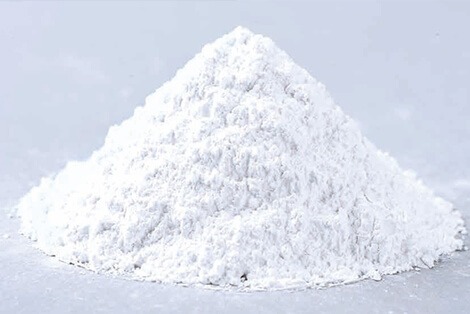Synthetic silica can be in two major groups by the different production processes. That’s fumed silica and precipitated silica…..
Fumed silica and Precipitated silica
Fumed silica VS. Precipitated silica
Both fumed silica and precipitated silica are silicas, or silica dioxide(SiO2). Their cost difference is mainly due to different production technology and raw materials.
Fumed silica and precipitated silica are for different applications. As a result of their different properties, both are easily found in various industries and medical areas.

Difference in their contents is as follows.
- Particle size: precipitated silica is usually in µm(micron meter). while fumed silica is in nm(nanometer).
- Impurity: precipitated silica assay around 93%, with higher impurity. While fumed silica assay above 99%, with very low impurity.
Difference in the applications is also different.
- Fumed silica is mainly used as a reinforcing agent for silicone rubber, coatings, and unsaturated resin thickener, ultrafine silica gels, and aerogels are used primarily as paint matting agents, thickeners, plastic film opening agents.
- Precipitated silica is mainly used as natural rubber and synthetic rubber reinforcing agent, and friction agent in toothpaste.
More details of the two are quoted from Wikipedia as follows.
Precipitated silica
Precipitated silica is a silica (SiO2) produced by precipitation from a solution containing silicate salts. In 1999, more than 1M tons/y were produced, mainly for use in tires and shoe soles.
Production
The production of precipitated silica starts with the reaction of an alkaline silicate solution with a mineral acid. Sulfuric acid and sodium silicate solutions are added simultaneously with agitation to water. Precipitation is carried out under alkaline conditions.
The choice of agitation, duration of precipitation, the addition rate of reactants, their temperature and concentration, and pH can vary the properties of the silica. The formation of a gel stage is avoided by stirring at elevated temperatures. The resulting white precipitate is filtered, washed, and dried in the manufacturing process.[2]
Na2(SiO2)7 + H2SO4 → 3.3 SiO2 + Na2SO4 + H2O
Properties
The particles are porous. Primary particles with a diameter of 5 – 100 nm, and a specific surface area of 5-100 m2/g. Agglomerate size is 1 – 40 µm with average pore size being> 30 nm. Density: 1,9 – 2,1 g/cm3.
Applications
- Filler, softener, and performance improvement in rubber and plastics
- Cleaning, thickening, and polishing agent in toothpaste for oral health care
- Food processing and pharmaceuticals are additive as anti-caking, thickening agents, and absorbents to make liquids into powders.
- Food rheology modifier
- Defoamer component.
Fumed silica
Fumed silica, also known as pyrogenic silica because it is produced in a flame, consists of microscopic droplets of amorphous silica fused into branched, chainlike, three-dimensional secondary particles which then agglomerate into tertiary particles. The resulting powder has an extremely low bulk density and high surface area. Its three-dimensional structure results in viscosity-increasing, thixotropic behavior when used as a thickener or reinforcing filler.
Properties
Fumed silica has a very strong thickening effect. The primary particle size is 5–50 nm. The particles are non-porous and have a surface area of 50–600 m2/g. Density 160–190 kg/m3.
Production
Fumed silica is made from flame pyrolysis of silicon tetrachloride or from quartz sand vaporized in a 3000 °C electric arc. Major global producers are Evonik (who sells it under the name Aerosil®), Cabot Corporation (Cab-O-Sil®), Wacker Chemie (HDK®), Dow Corning, and OCI (Konasil®).
Applications
Fumed silica serves as a universal thickening agent and an anticaking agent (free-flow agent) in powders. Like silica gel, it serves as a desiccant. It is used in cosmetics for its light-diffusing properties. It is used as a light abrasive, in products like toothpaste. Other uses include filler in silicone elastomer and viscosity adjustment in paints, coatings, printing inks, adhesives, and unsaturated polyester resins. It is also used in the production of cat box filler.
Other
European engineers reassess silica toothpaste grade and use natural zeolite in a new toothpaste formulation. natural zeolite ph is the same as silicas, and the two structure is almost the same.
